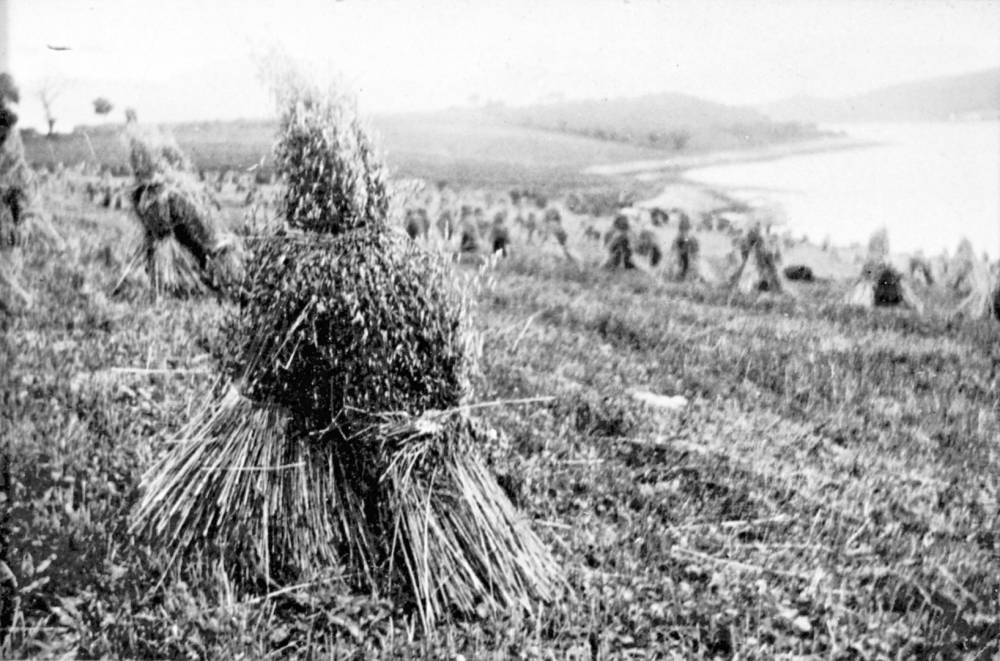Haymaking
Am Baile/Edinburgh and Scottish Collection, Edinburgh Central Library
Haymaking
"Haymaking, largely a thing of the past on Colonsay, was a marathon event starting in June and ending in three feet of snow in December or maybe September. The process started with the application of fertiliser (S.A.I. 20:10:10) 3cwt to the acre in April. This encouraged the grass to grow furiously and the weeds to flourish enthusiastically and endemically presenting a heavy matt of impenetrable vegetation. This was cut in a corncrake friendly manner with a fingerbar mower which was like a modern beard trimmer but a wee bit bigger and powered by the tractor, not a battery.
"Mowing, which in modern days is fast, furious and fatal, at least to rabbits or corncrakes, was frustratingly slow. The finger bar jammed with bundles of reluctant grass every few yards and the driver (me) had to jump of the tractor and clear the blockage, always attempting to remember to switch the machine off to avoid multiple amputations...
"To make good hay requires four or five successive dry days and lots of sun. This is not something readily achieved on Colonsay, and certainly not to order. Rain of any sort is bad and heavy rain washes all the good out of the grass and turns it black and mouldy. If the hay is baled, or stacked too soon it generates an enormous amount of heat...
"First thing in the morning we would be called to arms, or rather hayforks and sent out to spread the newly mown grass. This involved walking the length of the field, turning and spreading a row, and then turning round and doing another one. Monumentally boring, blister forming on the hands and like most farm work....futile. It was futile because we would finish spreading the hay at 11.30a.m. and it would start raining at 11.31a.m. precisely...
"In the olden, olden days the hay was stacked into mounds as seen in a Constable picture; often with the aid of strong men who arrived on bicycles after their regular days work... In the more recent olden days... we had to get a baler. As was typical of my father’s farming career he was ahead of the game but, two yards from goal, ball at his feet he shot over the bar. The baler, a machine that eats hay and makes it into rectangular bundles, not unlike a cow but made of metal... didn’t work. The bales emerged with only one string tied or no strings tied, or made bales so long you could walk on them to Islay...they were every shape known to geometry except rectangular.
"Finally the baling was finished and the bales lay scattered in the fields; begging the heavens to open and thwart the harvest yet again. They were loaded onto the trailer, built into a load four rows high and wobbled to the hayshed. It was macho not to tie the bales with rope but to build the load with interlocking rows so that it was impossible for them to fall off. They fell off."
As told by Donald 'Pedie' MacNeill
More information on visiting the area can be found here.
